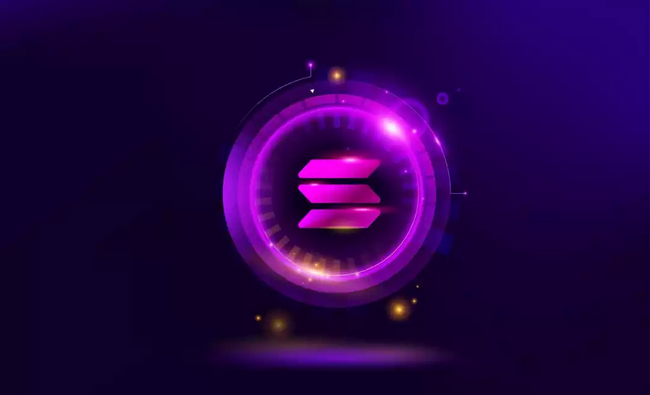-
 Bitcoin
Bitcoin $103,410.2943
0.37% -
 Ethereum
Ethereum $2,378.4102
1.71% -
 Tether USDt
Tether USDt $1.0000
0.02% -
 XRP
XRP $2.3798
-0.46% -
 BNB
BNB $653.3515
2.58% -
 Solana
Solana $169.3667
-2.03% -
 USDC
USDC $0.9999
-0.01% -
 Dogecoin
Dogecoin $0.2232
7.41% -
 Cardano
Cardano $0.7915
-0.27% -
 TRON
TRON $0.2592
-1.84% -
 Sui
Sui $3.8789
-2.59% -
 Chainlink
Chainlink $16.0918
-0.95% -
 Avalanche
Avalanche $24.0713
2.17% -
 Stellar
Stellar $0.2998
-0.60% -
 Shiba Inu
Shiba Inu $0.0...01564
3.07% -
 Hedera
Hedera $0.2049
1.60% -
 Hyperliquid
Hyperliquid $25.1726
0.08% -
 Toncoin
Toncoin $3.3417
1.68% -
 Bitcoin Cash
Bitcoin Cash $416.5211
0.31% -
 UNUS SED LEO
UNUS SED LEO $8.7409
0.13% -
 Polkadot
Polkadot $5.0542
7.79% -
 Litecoin
Litecoin $101.3278
3.08% -
 Monero
Monero $318.6128
4.89% -
 Bitget Token
Bitget Token $4.7713
6.21% -
 Pepe
Pepe $0.0...01275
0.19% -
 Dai
Dai $0.9999
0.00% -
 Pi
Pi $0.7199
-3.05% -
 Ethena USDe
Ethena USDe $1.0001
0.00% -
 Uniswap
Uniswap $6.5661
3.44% -
 Bittensor
Bittensor $437.0510
1.73%
how was solana created
Solana's genesis emerged from the collaborative efforts of skilled cryptographers and engineers seeking solutions to scalability and efficiency challenges within the blockchain realm.
Nov 07, 2024 at 11:58 am

Genesis of Solana: A Comprehensive Journey of Creation
Solana's inception can be attributed to a shared vision among a group of talented cryptographers and software engineers, united by their desire to address the scalability and efficiency challenges plaguing the blockchain industry. The journey of creating Solana was meticulously orchestrated, encompassing years of research, development, and relentless innovation.
1. Laying the Foundation: The Core Team
The genesis of Solana can be traced back to 2017 when Anatoly Yakovenko, a former Qualcomm engineer, published a whitepaper outlining the novel concepts that would eventually form the foundation of Solana. Yakovenko's vision resonated with engineers Greg Fitzgerald and Eric Williams, and together, they embarked on the ambitious mission of bringing Solana to life.
2. Introducing Proof of History (PoH): A Revolutionary Timestamping Mechanism
One of Solana's key innovations lies in its unique consensus mechanism called Proof of History (PoH). PoH serves as a distributed clock that timestamps events in the blockchain, eliminating the need for miners and drastically reducing latency in transaction processing. By introducing deterministic timestamps, PoH paved the way for Solana's exceptional scalability and high throughput.
3. The Tower BFT: Enhancing Consensus with Enhanced Performance
Solana employs a modified version of the Practical Byzantine Fault Tolerance (PBFT) consensus algorithm known as Tower BFT. Tower BFT leverages a leader-based approach, whereby a single validator temporarily assumes the leadership role and broadcasts blocks to other validators for verification. This streamlined process enhances the speed and efficiency of consensus, allowing Solana to handle a massive volume of transactions without compromising decentralization.
4. Transaction Pipelining: Exploiting Concurrency for Ultra-Fast Transactions
Solana incorporates transaction pipelining, a technique that overlaps the processing of multiple transactions. Instead of waiting for each transaction to complete before commencing the next, Solana processes transactions concurrently, optimizing resource utilization and minimizing latency. This parallelization approach significantly boosts the throughput of Solana, enabling it to process thousands of transactions per second.
5. Gulf Stream: An Efficient Transaction Forwarding Protocol
To optimize network communication and streamline transaction forwarding, Solana employs Gulf Stream, a novel protocol that routes transactions across the network. Gulf Stream strategically partitions validators into smaller clusters and utilizes a hierarchical forwarding mechanism to relay transactions between clusters. This partitioning enhances network efficiency and reduces congestion, ensuring smooth and rapid transaction propagation.
6. Sealevel: A Parallel Execution Environment for Smart Contracts
Solana introduces Sealevel, a revolutionary parallel execution environment for smart contracts. Sealevel allows multiple smart contracts to execute concurrently, breaking away from the traditional serial execution model. By leveraging thread-based parallelism, Sealevel significantly enhances the performance of smart contracts, empowering decentralized applications with greater responsiveness and scalability.
7. The Birth of Solana: A Blockchain for Efficiency and Scalability
In March 2020, after years of meticulous development and testing, Solana was officially launched, marking a significant milestone in blockchain innovation. Solana's architecture, centered around Proof of History, Tower BFT, pipelining, Gulf Stream, Sealevel, and other optimizations, revolutionized the industry by delivering unprecedented scalability, speed, and efficiency.
8. The Solana Ecosystem: Flourishing Innovation and Adoption
Since its inception, Solana has fostered a thriving ecosystem of developers, startups, and decentralized applications. The Solana Foundation, established as a non-profit organization, actively supports the development and adoption of Solana-based projects. The ecosystem encompasses a wide array of applications, including DeFi protocols, NFTs, gaming platforms, and Web3 infrastructure, all leveraging Solana's unique capabilities.
Disclaimer:info@kdj.com
The information provided is not trading advice. kdj.com does not assume any responsibility for any investments made based on the information provided in this article. Cryptocurrencies are highly volatile and it is highly recommended that you invest with caution after thorough research!
If you believe that the content used on this website infringes your copyright, please contact us immediately (info@kdj.com) and we will delete it promptly.
- Rexas Finance (RXS) Raises Over $48 Million in Presale, Tokenizing Real-World Assets to Open New Markets
- 2025-05-10 19:50:13
- The crypto market may be entering the early stages of a new altcoin season, according to analysts.
- 2025-05-10 19:50:13
- Bitcoin (BTC) Price Surges to $104,300, Confirming Uptrend and Solidifying Bullish Outlook
- 2025-05-10 19:45:12
- Bitcoin (BTC) Price Surges to $104,300, Confirming the Uptrend and Solidifying the Bullish Outlook Projected for 2025
- 2025-05-10 19:45:12
- SUI Has Experienced an Impressive Price Rally, Rising Nearly 20% in Just Two Days
- 2025-05-10 19:40:15
- Encapsulate Joins the IOTA Ecosystem as a New Validator
- 2025-05-10 19:40:15
Related knowledge

What is Ethereum’s Slashing mechanism and how to punish malicious behavior?
Feb 20,2025 at 03:08am
Key PointsOverview of slashingDifferent types of slashing in EthereumIncentives and consequences of slashingIdentifying and reporting slashed validatorsOngoing discussions and potential improvementsEthereum's Slashing Mechanism: Punishing Malicious BehaviorEthereum's slashing mechanism is an essential tool for ensuring network security and punishing mal...

What is the verifier node of Ethereum and how to become a verifier?
Feb 19,2025 at 06:00pm
The Verifier Node of Ethereum: A Comprehensive GuideKey Points:What is a Verifier Node?How to Become a Verifier NodeResponsibilities and Rewards of a Verifier NodeMinimum Requirements for Becoming a Verifier NodePotential Difficulties in Running a Verifier Node1. What is a Verifier Node?A Verifier Node is an independent entity on the Ethereum network th...

What is Ethereum’s staking, and how to participate and earn money?
Feb 19,2025 at 04:37pm
Key Points:Understanding Ethereum's Staking MechanismSteps to Participate in StakingBenefits and Rewards of StakingSecurity and Risk ConsiderationsTechnical Requirements and Hardware OptionsPotential Challenges and Troubleshooting TipsFAQs on Ethereum StakingWhat is Ethereum's Staking?Proof-of-Stake (PoS) is a consensus mechanism used in blockchain netw...

What is Ethereum’s DAO (Decentralized Autonomous Organization) and how does it work?
Feb 20,2025 at 03:12am
Key PointsDefinition and Structure of a DAOGovernance and Decision-Making in DAOsBenefits and Use Cases of DAOsChallenges and Limitations of DAOsWhat is Ethereum's DAO (Decentralized Autonomous Organization) and How Does It Work?Definition and Structure of a DAOA Decentralized Autonomous Organization (DAO) is an innovative governance and management fram...

What is Ethereum's multi-signature wallet and how to improve security?
Feb 20,2025 at 02:18pm
Key Points:Understanding the Concept of a Multi-Signature WalletBenefits and Drawbacks of Multisig WalletsRequirements for Setting Up a Multisig WalletStep-by-Step Guide to Generating a Multisig WalletImplementing Strategies for Enhanced Security1. Understanding the Concept of a Multi-Signature WalletA multi-signature (multisig) wallet in the Ethereum e...

What is Ethereum's oracle and how to provide data for smart contracts?
Feb 21,2025 at 01:30am
Key Points:Understanding the concept of oracles in EthereumExploring different types of oraclesDetailed guide on how to provide data for smart contractsAddressing potential challenges and considerationsWhat is Ethereum's Oracle?Oracles are crucial components in the Ethereum ecosystem, enabling smart contracts to access real-world data and off-chain even...

What is Ethereum’s Slashing mechanism and how to punish malicious behavior?
Feb 20,2025 at 03:08am
Key PointsOverview of slashingDifferent types of slashing in EthereumIncentives and consequences of slashingIdentifying and reporting slashed validatorsOngoing discussions and potential improvementsEthereum's Slashing Mechanism: Punishing Malicious BehaviorEthereum's slashing mechanism is an essential tool for ensuring network security and punishing mal...

What is the verifier node of Ethereum and how to become a verifier?
Feb 19,2025 at 06:00pm
The Verifier Node of Ethereum: A Comprehensive GuideKey Points:What is a Verifier Node?How to Become a Verifier NodeResponsibilities and Rewards of a Verifier NodeMinimum Requirements for Becoming a Verifier NodePotential Difficulties in Running a Verifier Node1. What is a Verifier Node?A Verifier Node is an independent entity on the Ethereum network th...

What is Ethereum’s staking, and how to participate and earn money?
Feb 19,2025 at 04:37pm
Key Points:Understanding Ethereum's Staking MechanismSteps to Participate in StakingBenefits and Rewards of StakingSecurity and Risk ConsiderationsTechnical Requirements and Hardware OptionsPotential Challenges and Troubleshooting TipsFAQs on Ethereum StakingWhat is Ethereum's Staking?Proof-of-Stake (PoS) is a consensus mechanism used in blockchain netw...

What is Ethereum’s DAO (Decentralized Autonomous Organization) and how does it work?
Feb 20,2025 at 03:12am
Key PointsDefinition and Structure of a DAOGovernance and Decision-Making in DAOsBenefits and Use Cases of DAOsChallenges and Limitations of DAOsWhat is Ethereum's DAO (Decentralized Autonomous Organization) and How Does It Work?Definition and Structure of a DAOA Decentralized Autonomous Organization (DAO) is an innovative governance and management fram...

What is Ethereum's multi-signature wallet and how to improve security?
Feb 20,2025 at 02:18pm
Key Points:Understanding the Concept of a Multi-Signature WalletBenefits and Drawbacks of Multisig WalletsRequirements for Setting Up a Multisig WalletStep-by-Step Guide to Generating a Multisig WalletImplementing Strategies for Enhanced Security1. Understanding the Concept of a Multi-Signature WalletA multi-signature (multisig) wallet in the Ethereum e...

What is Ethereum's oracle and how to provide data for smart contracts?
Feb 21,2025 at 01:30am
Key Points:Understanding the concept of oracles in EthereumExploring different types of oraclesDetailed guide on how to provide data for smart contractsAddressing potential challenges and considerationsWhat is Ethereum's Oracle?Oracles are crucial components in the Ethereum ecosystem, enabling smart contracts to access real-world data and off-chain even...
See all articles























































































